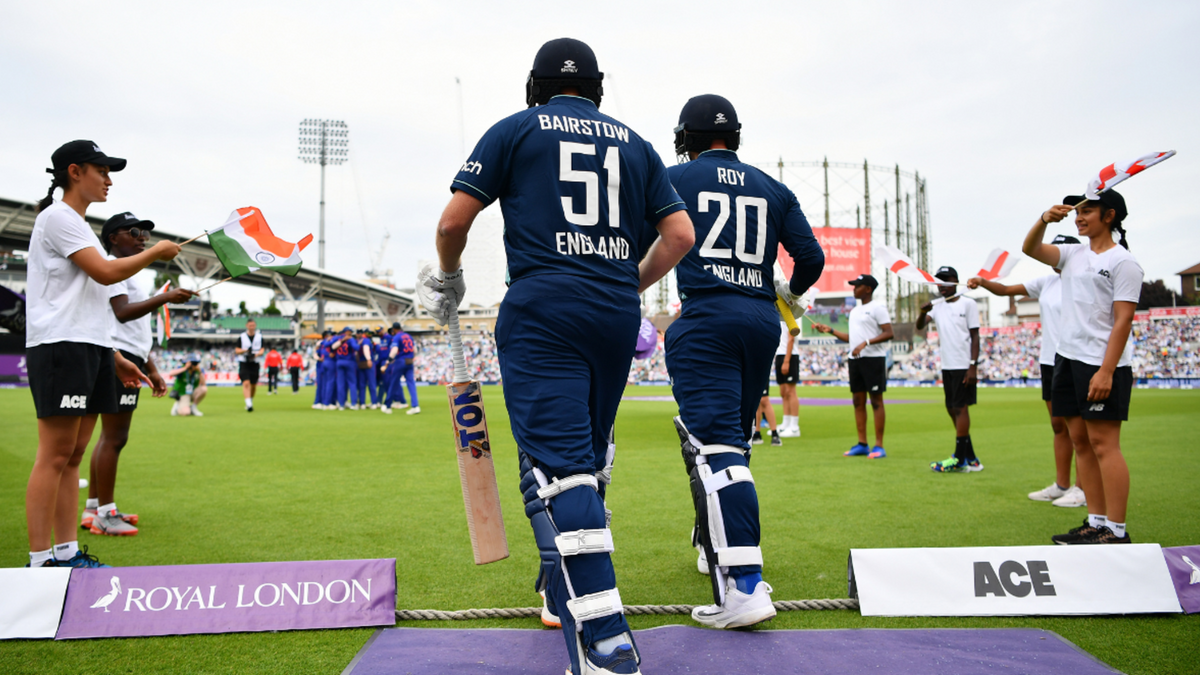
Injuries to their two key men at the top of the order for the first ODI against New Zealand gave England a chance to Test their World Cup selection possibilities, but their absence exposed a weakness in batting depth which could be crucial in a six-week World Cup.
Subscribe to the Wisden Cricket YouTube channel for post-match analysis, player interviews, and much more.
When Harry Brook and Dawid Malan appeared at the top of the team sheet this morning, it was a clear sign of the continued ambiguity around what England’s top order will look like in India. With Brook keeping up the pressure to shoehorn himself into the squad, and Malan attempting to keep his head above Jason Roy come crunch time, all the cards were on the table.
The reason this unfamiliar opening partnership formed – Brook has never opened in List A cricket – was due to a couple of minor niggles to England’s main men. Jonny Bairstow picked up a shoulder niggle in the fourth T20 earlier this week, and Roy suffered a back spasm pre-match. While Brook was ready and waiting to come in for one of the openers this time, as of yet he will not be on hand should the same scenario arise during the tournament.
With one of Malan, Roy or Brook likely not to make the final squad, if both of England’s openers suffer niggles in India, there are few options to replace them at the top of the order. Jos Buttler would be the obvious choice, but that would leave the middle order without the depth of batting which has characterised England’s white-ball dominance.
Those problems are not just limited to the fitness of their openers. England’s first-choice World Cup XI will likely leave one batter in their squad on the bench. If more than one of their top five picks up an injury, their batting depth will have to take a hit. While each side will have injury replacements available to them, that doesn’t account for a player with a niggle which keeps them out of one game but not the remainder of the tournament. Once a player is swapped out of the squad, they cannot come back.
For England in particular, this puts them in a precarious position. Only four members of their squad are under 30, with ten of the 15 aged 33 or over. Among their number, Ben Stokes is as ever managing his broken body, Bairstow a bionic leg, and Root a glass back. That’s not to mention the illness that travelling sides often pick up while touring in Asia.
Should two of England’s top five go down with a combination of non-serious injury or short-term sickness, the balance of the side looks drastically different. Liam Livingstone would be pushed up into the top five, and Sam Curran or Chris Woakes could find themselves at No.7. That’s in stark contrast to 2019, where Buttler batted mainly at six and Moeen Ali came in at seven for the first part of the tournament. When Roy suffered an injury halfway through that competition, James Vince replaced him. If another had come down with an injury during that period, the worst that could have happened would have been Buttler shunted up to five. This time around, he’s already there with no one out of the side.
This dilemma has arisen for several reasons. First is England’s preference for lower-order all-rounders to compensate for Stokes’ inability to bowl. Packing the lower order with big hitters, there for a good time not a long time, leaves less space in their 15 for top-order options. Second, the length of the tournament and the workloads on fast bowlers mean rotation is key. Teams must have enough seam options to spread the workload just thin enough to make it through the six weeks. This puts additional pressure on the batters both to stay fit and to perform through the tournament, with limited options to replace them.
With all eyes on how Brook fits in the squad, England potentially have a more worrying problem on their hands. With a condensed top order compared to four years ago and an ageing squad, the damage injuries could do to their campaign is a far greater worry.








